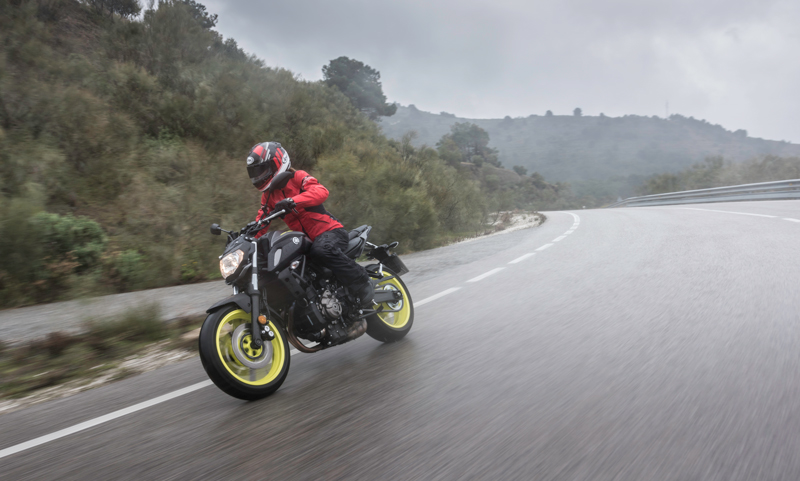New model press launches are usually carefully curated affairs—perfectly curvy roads, impressive scenery, cool coffee stops and, of course, plenty of gastronomic delights. There’s one aspect, however, that’s completely out of even the most fastidious event planner’s control: the weather.
Yamaha thought it was playing it safe by booking the global launch of the refreshed 2018 MT-07 (formerly known Stateside as the FZ-07) in Marbella, on southern Spain’s Costa del Sol (“Sun Coast”). Situated on hills overlooking the Mediterranean and backed by picturesque mountains covered with squiggly pavement, it’s an ideal base for a day’s test ride with a gaggle of throttle-happy journalists. Well, usually.
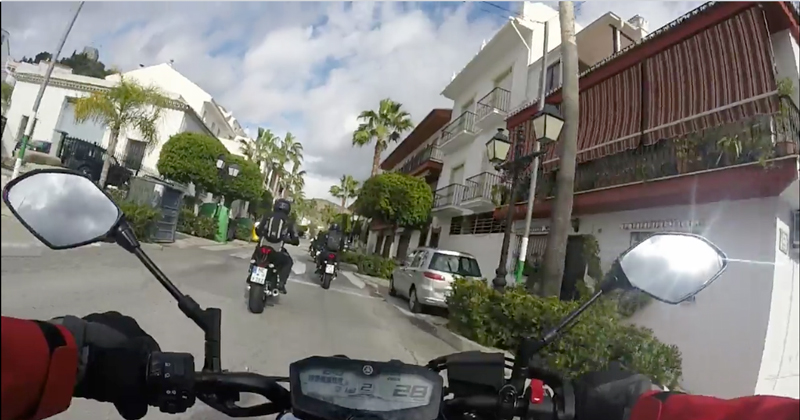
Instead of sunny skies and fast roads, our test ride day dawned cool and cloudy, and after a meager 40 km (about 25 miles) the skies opened up, slowing us down considerably but giving us a great opportunity to put our waterproof boots and rain gear to the test. On the one hand, this meant our ability to evaluate the MT-07 at an aggressive pace was limited—but on the other, it gave us an opportunity to ride it in “real world” conditions…not that any motorcyclist really enjoys riding in 50 mph wind gusts and cascading sheets of rain.
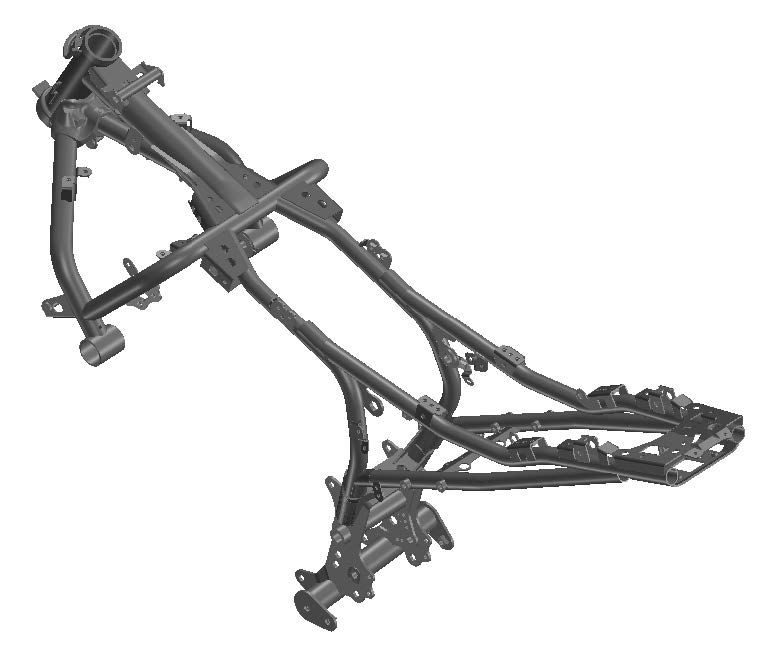
The MT-07 has enjoyed a light restyle for 2018, including revised suspension that is stiffer and employs more compression and rebound damping, a roomier rider and passenger seat (seat height remains the same at 31.7 inches), a redesigned tank cover, a new headlight, front turn signals that have been relocated to just above the redesigned radiator cover, a restyled tail with new LED tail light, and standard ABS (formerly a $500 option).
The “MT,” by the way, stands for “Master of Torque,” a nomenclature ostensibly derived from the MT-01 muscle bike, but as EIC Tuttle discovered it also happens to be the title of an anime series produced by Yamaha in Japan. The first episode is called “Idle Roughness.” We kid you not.
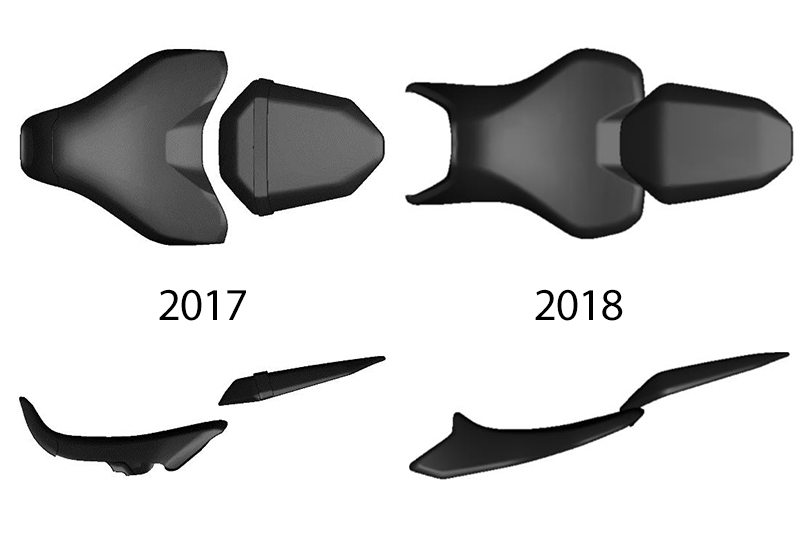
We’ve been smitten with the FZ-07 since it was first introduced in 2014 as a 2015 model: it’s fun, inexpensive and has a lot of character for what some would consider an entry- or intermediate-level bike. We’re not the only ones—Yamaha U.S. says the FZ-07 was its number one-selling bike in 2017, and more than 15,000 units were sold from June 2014 through December 2017. Naked sportbikes in general are becoming more popular, as casual riders abandon the ultra-aggressive posture, power and price of pure sportbikes in favor of naked versions that deliver 80 percent of the performance along with real-world comfort and a lower price tag. To that end, Yamaha says sales of its “Hyper Naked” segment, which includes the FZ/MT-07, FZ/MT-09 and FZ/MT-10, are up 260 percent since 2012.
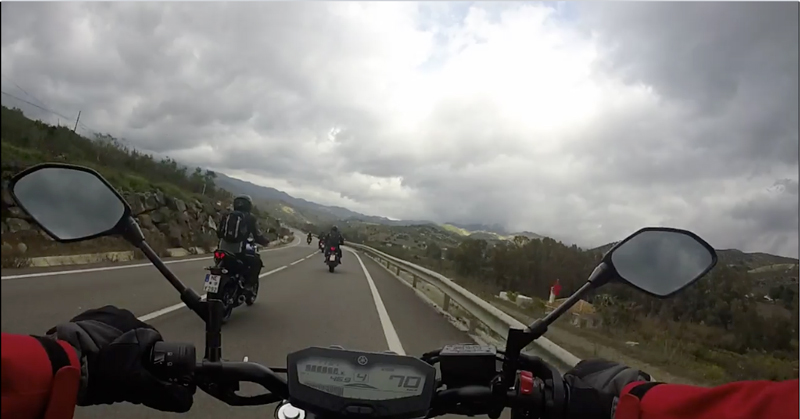
While the MT-07 excels as a complete package, a large part of its appeal can be attributed to its feisty CP2 (Crossplane Concept) 689cc, DOHC, 8-valve parallel twin engine, with an uneven 270-degree firing interval for character enhancement and a boost in low-to-midrange power. Its two cylinders are offset 7mm toward the front of the engine, a design borrowed from the hypersport YZR-M1 and the MT-09, reducing cylinder-to-piston friction and horsepower loss, and increasing fuel efficiency.
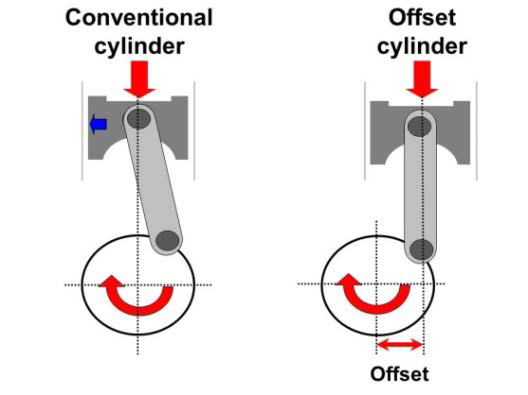
From the rider’s seat, the bike feels rambunctious, light and fun—even more fun perhaps than its more powerful MT-09 brother. The snarling mill sounds great, power delivery is predictable and linear, and the smooth-shifting six-speed transmission has ratios specifically chosen to eliminate the need for frequent shifting. The tubular steel frame, which uses the engine as a stressed member, has walls that vary in thickness—key to the bike’s claimed 403-pound wet weight.
The MT-07 lacks techno-luxuries like traction control, throttle-by-wire or ride modes; the traction control is your right hand. On most test rides, I would lavish praise on the feistiness of the MT-07’s engine, but on this rainy day I was grateful for its linear torque curve. The parallel twin delivered enough grunt at low rpm to let me stay in a higher gear, reducing the chance of rear wheel slip as we negotiated the never-ending curves.
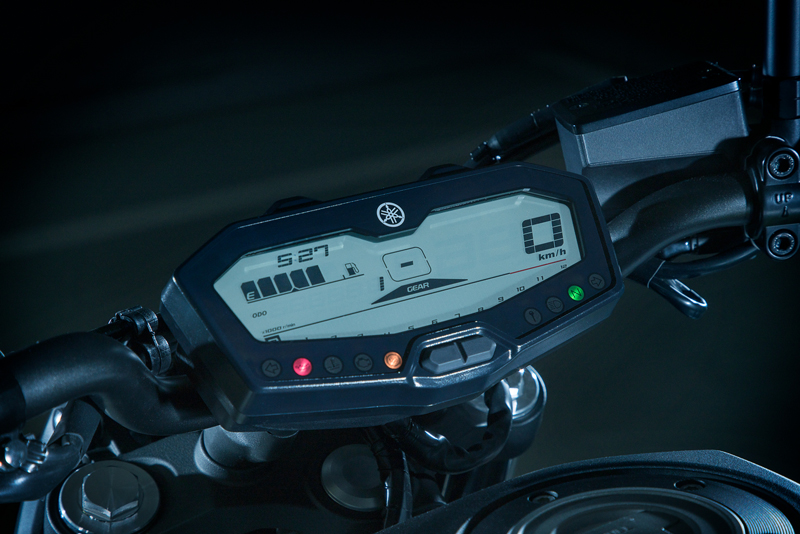
Equally impressive were the ABS-equipped brakes. Powerful 4-piston opposed front calipers clamp down on wave-type rotors and offer great feedback at the lever, while the single-piston, single-disc rear brake has a bit of free play in the foot lever before grabbing, but it’s not abrupt and is easy to modulate—both are godsends when tiptoeing down a winding mountain road in a downpour.
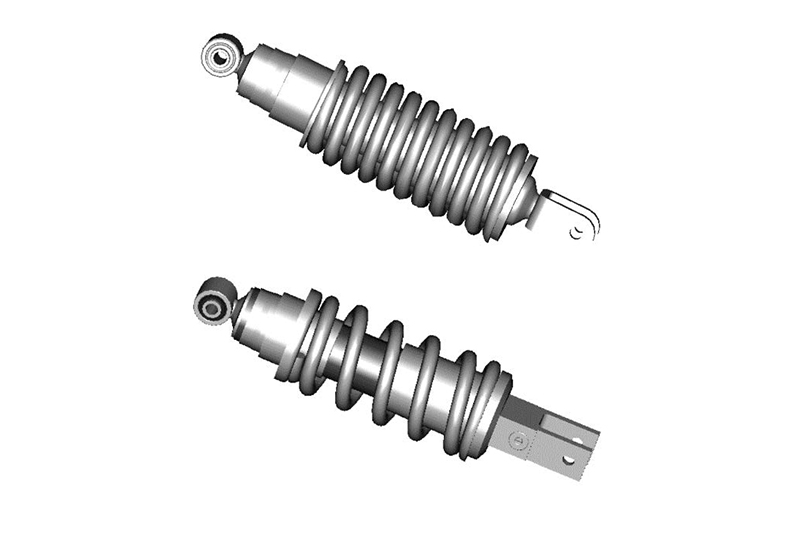
Thanks to the weather, I didn’t have much of a chance to evaluate the MT-07’s revised suspension, but on paper it looks promising. The 41mm KYB fork has the same 5.1 inches of travel, but is now 6 percent stiffer with a 16-percent increase in rebound damping. The rear KYB shock, which bolts directly to the engine, is 11 percent stiffer, with a 27-percent increase in high-speed rebound damping and a whopping 40-percent increase in high-speed compression damping. In addition to preload adjustment, which thanks to a redesigned side cover is easier to access, it also features rebound adjustment, à la the MT-09.
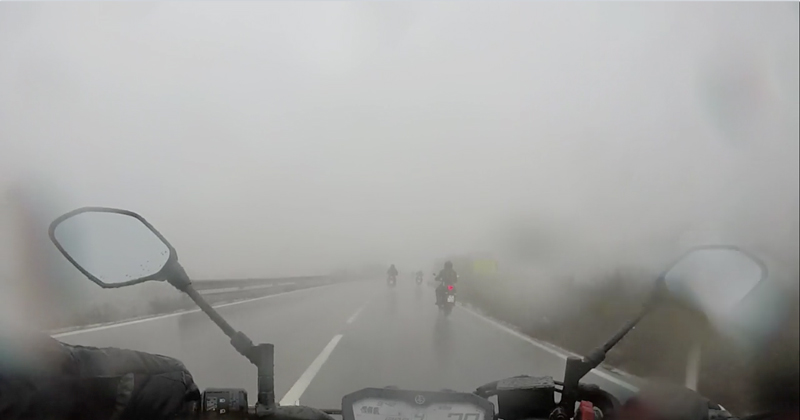
I’ve been spending a lot of time lately on our Yamaha XSR700 test bike, which is based on the MT-07 and shares its engine, frame, brakes and suspension settings. I commute on it daily and hit the canyons on the weekends, and at first blush I’d say that for me, the MT-07 has the edge. I prefer the narrower handlebar and shorter seat-to-footpeg distance on the MT, plus its new, longer seat allows me to move around when riding aggressively, while the XSR’s accessory solo saddle clings to my riding pants and discourages movement. The MT’s tires get the nod as well; while the XSR’s retro-cool Pirelli Sportscomp tires look the part, they track rain grooves and aren’t as stable in wet weather as the Bridgestone Battlax BT023s on my MT-09 press launch bike (U.S. models will be shod in either the Bridgestones or Michelin Pilot Road 4s).

In short, it’s easy to see why the FZ/MT-07 has become Yamaha’s bestseller. When it comes to bang-for-the-buck value, sharp looks and good, old-fashioned fun, the MT-07 delivers in spades. For 2018, it will be available in the U.S. in three colors, Team Yamaha Blue, Matte Gray and Intensity White, for $7,599. Yamaha says we can expect to see them in dealers later this month, and as soon as we can get our hands on a long-term tester we’ll deliver an in-depth ride report.
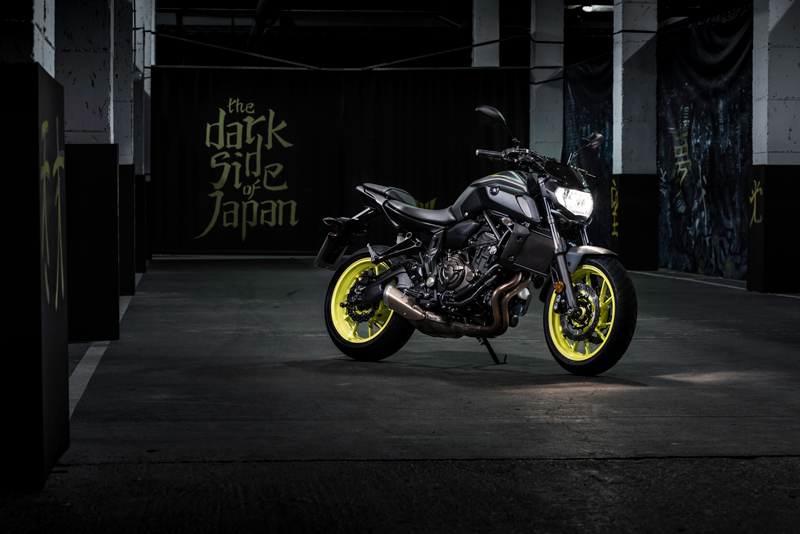
2018 Yamaha MT-07
Base Price: $7,599
Website: yamahamotorsports.com
Engine Type: Liquid-cooled, parallel twin, DOHC, 4 valves per cyl.
Bore x Stroke: 80.0 x 68.6mm
Displacement: 689cc
Transmission: 6-speed, cable-actuated wet clutch
Final Drive: Chain
Wheelbase: 55.1 in.
Rake/Trail: 24.8 degrees/3.5 in.
Seat Height: 31.7 in.
Wet Weight: 403 lbs. (claimed)
Fuel Capacity: 3.7 gals.
MPG: 86 PON min. (avg) NA


